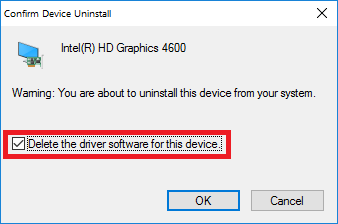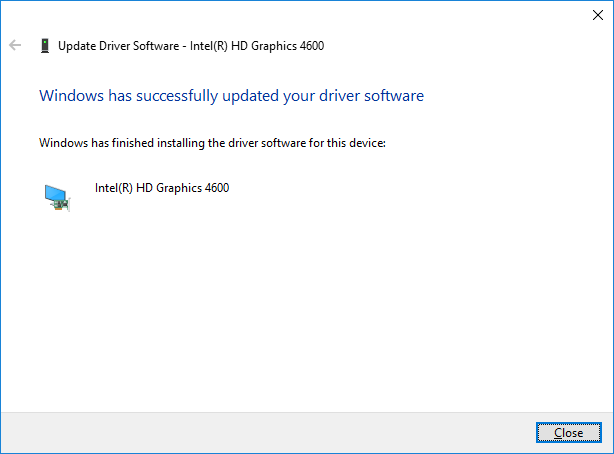In my latest grief with my ASUS N550JV Laptop… Upon returning back home from my tramping (hiking) trip, I received “Display driver igfx stopped responding and has successfully recovered” (Event ID 4101) Over and over and over and over and over while trying to upload the photos from the aforementioned trip to my website.
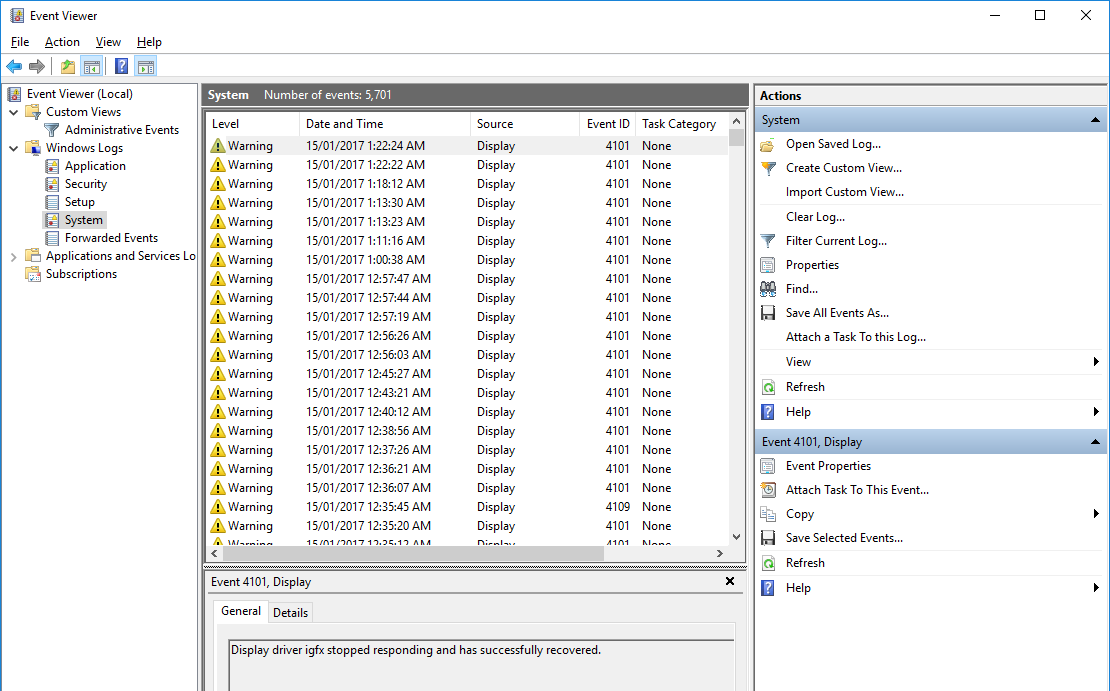
Yes, the ASUS N550JV was giving me grief yet again. Though thankfully I think I’ve finally nailed this at least for the time being. In the end, it involved several hours of trying out many different drivers off of the Intel website and then testing whether or not the issue went away.
Note: this post describes how I fixed this issue for my specific situation, this IGFX driver issue appears to be multifaceted and there’s a good chance my issue here will not be the same as yours.
I went to the Intel support website and downloaded Intel HD Graphics driver version 15.40.25.4463 and selecting win64_154025.4463.zip drivers. WARNING: The latest driver on Intel’s website for HD4600 (as of writing this) 15.40.28.4501 actually made the issue much worse for me, though “Your mileage may vary” as it were.
From there, I unzipped win64_154025.4463.zip to a directory / folder…


Then I Disconnected from the Internet (In my case, I simply Unplugged the LAN Cable)
(This is so that Windows wouldn’t attempt to run roughshod by downloading a troublesome driver from WIndows Update and installing it defeating my attempts to install my desired driver).
Went into Device Manager, expanded Display adapters,right mouse button on Intel(r) HD Graphics 4600 and selected Uninstall
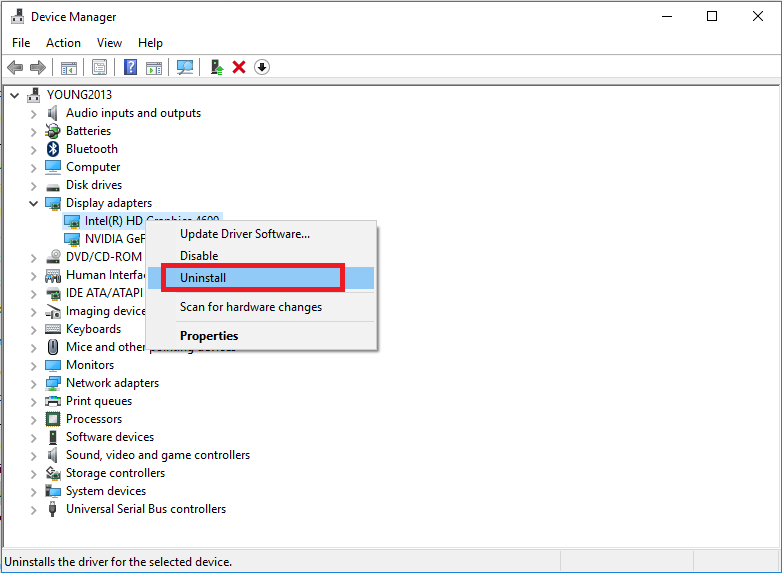 At the Confirm Device Uninstall Dialog, I Ticked the “Delete the driver software for this device” (Important), so Windows doesn’t try and run roughshod and reinstall the bad drivers.
At the Confirm Device Uninstall Dialog, I Ticked the “Delete the driver software for this device” (Important), so Windows doesn’t try and run roughshod and reinstall the bad drivers.
Windows after about a minute or had automatically installed Microsoft Basic Display Adapter in it’s place
In the tree listing, right mouse I clicked on Microsoft Basic Display Adapter and selected “Update Driver Software…”
Then at the next screen I selected “Browse my computer for driver software”…
From there, when I was prompted for the location of the driver: Navigated to the directory / folder where I had unzipped the win64_154025.4463.zip file in to. 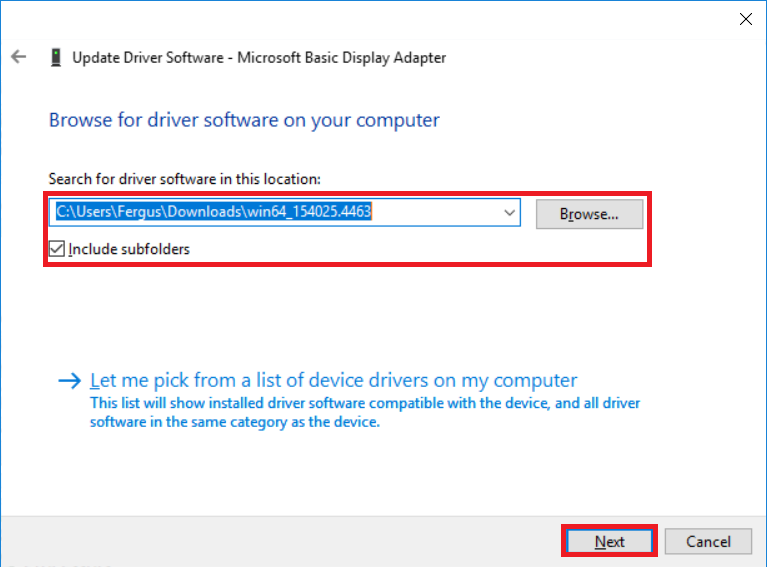
It then subsequently when through the folder I specified, discovered the supposedly correct drivers and installed them.
Success! (at least for me)
Then Reconnected to the Internet. Once the desired good drivers have been installed, Windows at least in my case, thankfully didn’t go running roughshod and replace the desired drivers with one that it’s thinks it’s best.
So far, with the 15.40.25.4463 drivers, I have not been able to reproduce the original issue despite repeating steps that originally triggered off the “Display driver igfx stopped responding and has successfully recovered” event. Hopefully it won’t come back otherwise, I will be this…

—
As an aside, originally I went through a whole gambit of trying different methods of fixing the issue. Including…
- Attempting to install the generic Intel Graphics drivers (.EXE ones) just gets me “This computer does not meet the minimum requirements for installing the software”
or…
“The driver being installed is not validated for this computer. Please obtain the appropriate driver from the computer manufacturer”. - Checking the ASUS support website for the ASUS N550JV model to find that the driver they were offering was over 3 years old.
- Had unzipped the Generic Intel HD Graphics drivers, trying to update manually only to have Windows 10 say “Windows has determined that the driver software for your device is up to date” (though this was before I had discovered the “Delete the driver software for this device” tick box (Scroll above))
If I had trouble fixing this on my own PC, what will an ordinary user be experiencing when faced with trying to resolve similar issues? Would loathe to think that spending countless hours going back through all the available device drivers to find one that works is becoming the norm.
I will further admit, that I am now sort of questioning where Desktop PC Development in general terms is headed, it’s almost like we appear to be sliding backwards in overall utility towards the end user with Windows 7 being the Functional peak.
My thoughts only (and are certainly subjected to change / correction)
